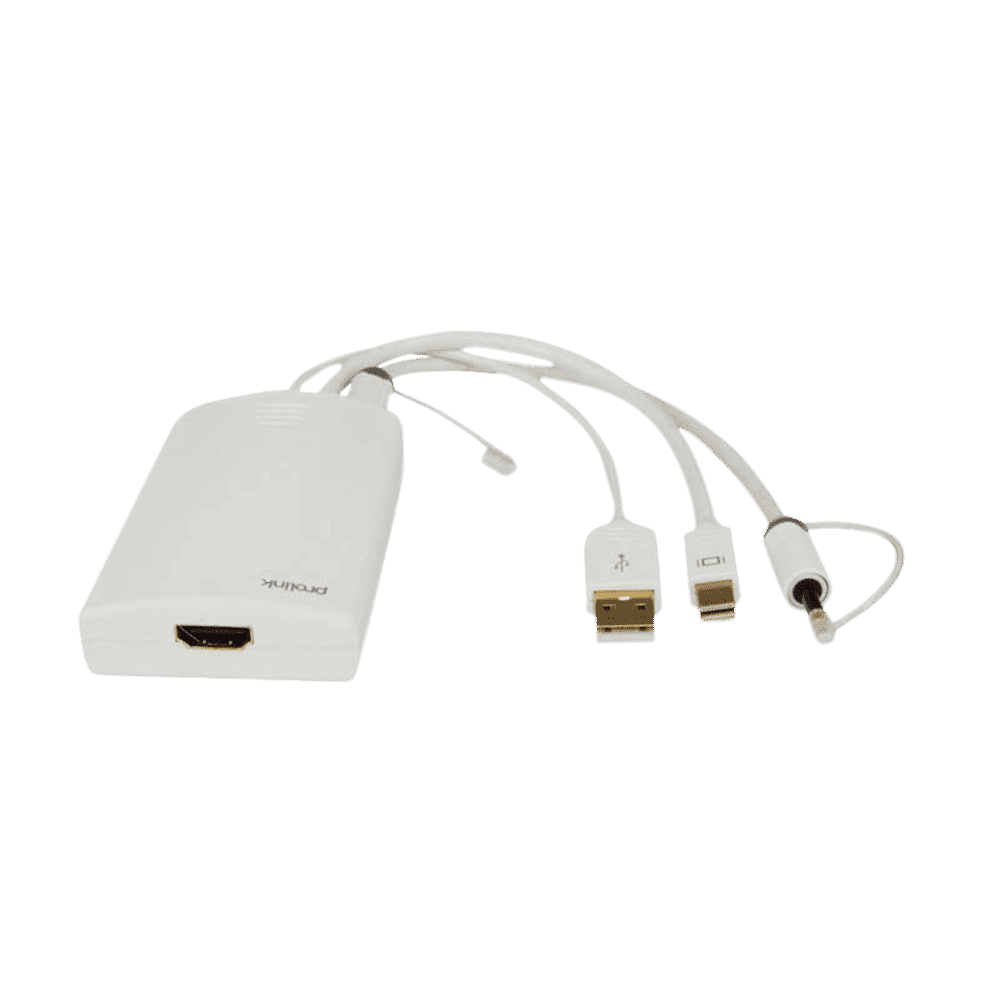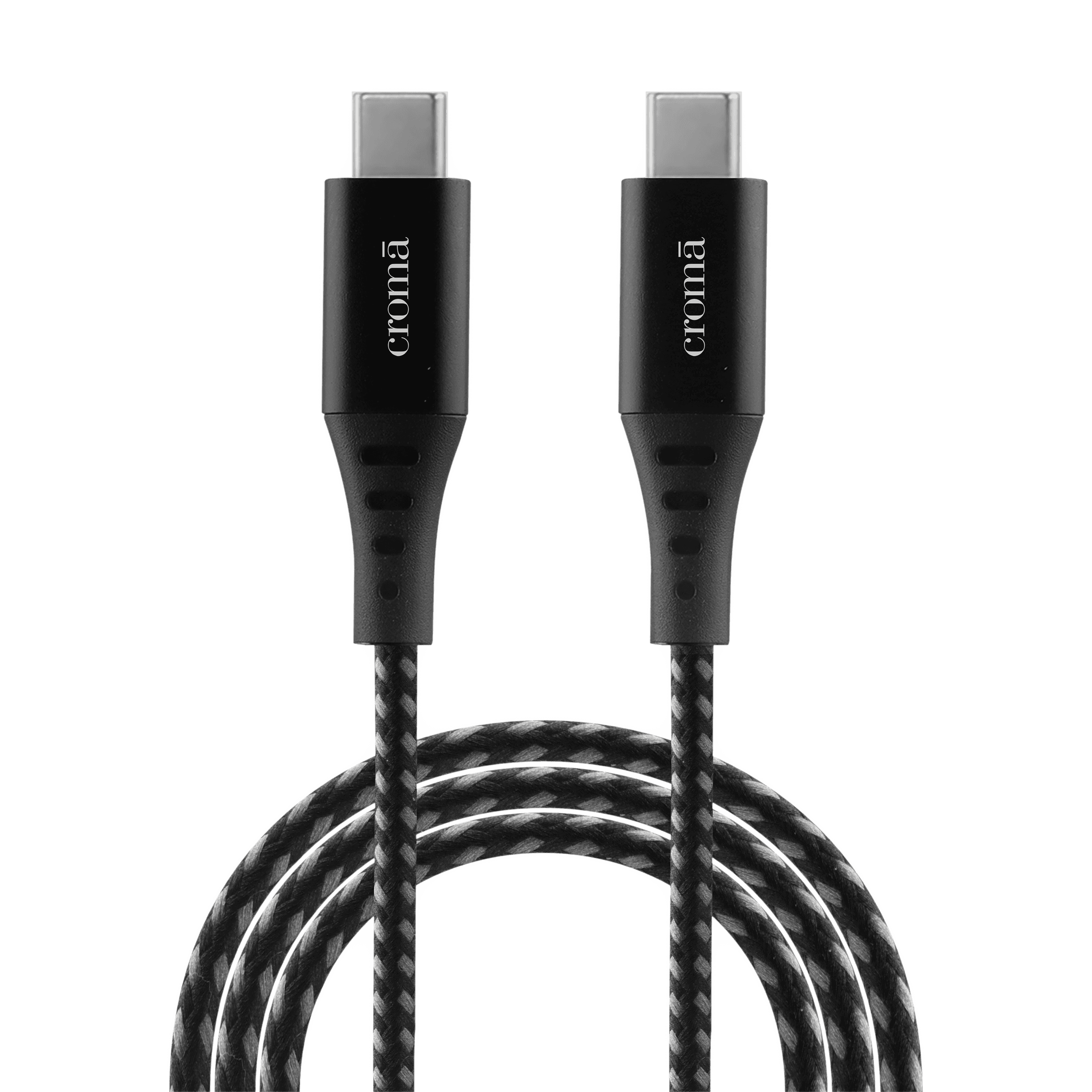%20(Presentation)%20(1600%20x%20600%20px)(104)-e7981044-6d08-4425-b3f9-f97c6bfbc443.webp&w=3840&q=75)
Consumer Electronics
•05 min read

Buy ultraprolink USB 3.1 Type C to USB 3.1 Type C, USB 3.0 Type A, HDMI USB Hub (Bi-Directional Flow, White) online at best prices from Croma. Check product details, reviews & more. Shop now!
Whether you're upgrading devices or troubleshooting connectivity issues, understanding how to connect Micro USB to Type-C is a vital step in keeping pace with today's technology. This guide explores the compatibility, adapters, and techniques required for seamless connections between your older Micro USB devices and the modern Type-C ecosystem. By the end of this discussion, you will be equipped with clear insights on how to connect micro usb to type c and make informed decisions regarding adapters, cables, and device upgrades.
Micro USB has served as a ubiquitous interface for many devices over the past decade. It was widely used in smartphones, accessories, and various electronic gadgets. Despite the advent of newer technology, countless legacy devices and accessories still rely on the Micro USB connection, making it essential to appreciate its historical relevance and ongoing role in daily use.
USB Type-C represents the new era of connectivity. Its reversible design means that orientation is no longer an issue—simply plug it in either way. More than just convenience, Type-C offers faster data transfer speeds and superior charging capabilities. This advancement caters to a range of devices, from high-performance laptops and smartphones to innovative home appliances available on platforms like Tata Neu.
In essence, the physical design and functionality of the two connectors differ. While Micro USB is known for its smaller size and historical dominance, Type-C stands out with its enhanced durability and versatility. This upgrade is a game-changer not only for tech enthusiasts but for anyone keen on keeping their gadgets both current and efficient.
The global shift towards USB Type-C as a universal connector drives standardisation. Aligning with this trend helps reduce electronic waste by phasing out obsolete connections and embracing a unified standard. This environmental benefit is particularly appealing when you consider the conveniences offered by platforms like Tata Neu, where every purchase can earn NeuCoins rewards to support your next smart investment.
Type-C ports bring enhanced features that improve everyday interactions with your devices. Faster data transfer speeds, potent fast charging capabilities, and the ability to manage audio, video, and power through a single port simplify technology use. This is especially beneficial for young professionals and families seeking reliable and efficient solutions for their devices.

Buy Croma Type C to Type C 3.3 Feet (1M) Cable (Nylon Braided, Grey) online at best prices from Croma. Check product details, reviews & more. Shop now!
A practical solution to bridge older and newer devices is the Micro USB to Type-C adapter. These adapters are designed to maintain the integrity of data and power flow between your devices. When choosing an adapter, ensure it meets your device’s specific power and data requirements. It’s also wise to consider reviews and certifications to confirm that the adapter fits your needs.
For the technically inclined, there are DIY conversion methods available. Enthusiasts may explore wiring techniques to convert Micro USB connections manually. However, this process can be challenging and might void warranties, so seeking professional services is often a safer option. Professional guidance ensures that your Micro USB to USB-C connection guide results in devices that function reliably and last longer.
The process of connecting Micro USB to Type-C is straightforward when you follow these steps: First, identify the correct adapter or conversion cable. Next, connect the Micro USB end to your device and attach the USB Type-C end to the new device or charger. Finally, verify that both power and data are transmitted efficiently. Keeping these steps in mind will help ensure your transition is smooth and hassle-free.
Before making a purchase decision, it is crucial to understand the compatibility considerations. This means assessing the power requirements of your device and knowing any potential data transfer limitations when using a Micro USB to Type-C adapter. Awareness of these factors aids in making choices that align with your device’s specifications, ensuring that performance remains at its peak.
Many users face minor challenges when making this transition. Common issues include failed connections, potential overheating, or adapters that do not meet the quality expectations. Simple troubleshooting steps involve verifying the specifications, checking all connections, and, if needed, replacing the adapter with one better suited to fast charging requirements. High-quality adapters, such as those supported on platforms like Tata Neu, help mitigate these issues while also enabling you to earn valuable NeuCoins rewards as you shop smartly.
Pro Tip: Choosing the Right Charging Cable Adapter
Always check the specifications of your Micro USB to Type-C adapter or cable before purchasing. Ensure it supports your device’s power and data requirements to avoid compatibility issues.

Buy Hyphen Type A to Micro USB 3.9 Feet (1.2M) Cable (Tangle Free Design, Black) online at best prices from Croma. Check product details, reviews & more. Shop now!
The trend towards USB-C is not confined to consumer electronics alone. Industries, including smartphones, laptops, and even gaming devices, are rapidly embracing this efficient connector. This standard is paving the way for more integrated and simplified experiences, ensuring that even those with older Micro USB peripherals can find a place in this modern ecosystem.
Planning for future upgrades means preparing for a transition to USB-C without the loss of access to your older devices. This transitional phase is smooth when you invest in quality adapters and conversion solutions that allow you to continue using legacy accessories while benefitting from the advancements of Type-C technology. With platforms like Tata Neu offering expert guidance, you can make these decisions confidently and earn NeuCoins rewards along the way.
Yes, you can connect Micro USB to USB-C using a Micro USB to Type-C adapter or conversion cable designed for this purpose.
While you cannot physically change the port on your phone, you can use a Micro USB to Type-C adapter to enable connectivity with Type-C accessories.
Look for adapters that support your device’s specific power and data requirements. Check reviews and certifications for quality assurance.
In some cases, using an adapter may result in slower charging speeds due to compatibility limitations. Choose high-quality adapters designed for fast charging to mitigate this issue.
Yes, advanced users can convert wiring manually, but it requires technical expertise and may void warranties. Professional assistance is recommended for such tasks.
Unlocking the connection between Micro USB and Type-C is more than just a technical task—it is an invitation to embrace the future of universal connectivity. Understanding the nuances of both technologies, recognising the challenges involved, and utilising the right adapters and techniques ensures that you are not left behind in the digital revolution. This forward-thinking approach aligns well with the value-driven perspective of progressive consumers. By choosing quality products and smart conversion methods, you maintain a seamless integration between your cherished legacy devices and modern innovations. In addition, leveraging rewards such as NeuCoins on Tata Neu enhances every transaction, adding extra value to your technology investments.
As you explore connectivity solutions that bridge both older and modern devices, remember that informed choices lead to a more efficient and rewarding technological experience. The shift from Micro USB to Type-C is not just about keeping up with current trends—it is about setting the stage for future upgrades and smarter shopping practices. With clear guidance and quality solutions at your fingertips, your journey towards a fully connected digital lifestyle has never been more exciting.